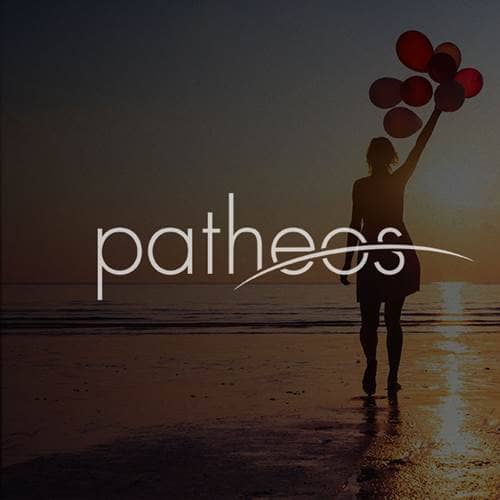- Trending:
- Pope Leo Xiv
- |
- Israel
- |
- Trump
- |
- Social Justice
- |
- Peace
- |
- Love

RELIGION LIBRARY
New Age
Sacred Texts
Unlike most other religions, the New Age possesses no central scriptures. Practicing a religion that is really a disparate and informal network, New Age practitioners-sometimes also called New Agers-freely choose from a variety of options to guide them in their spiritual development. Over time these possible scriptural choices have attained a truly massive volume, with major merchants such as Barnes & Nobles and Amazon.com stocking thousands of New Age titles, and smaller New Age bookstores offering many more self-published or regionally-distributed texts. New Age practitioners might employ any of these materials as a scriptural guide. However, because the New Age so strongly values individual identity and self-development, the movement's general outlook discourages long-term adoption of a particular text as a scripture. In keeping with a conceptualization of gradual personal evolution and self-actualization, members of the New Age subculture rapidly adopt new texts and leave behind older ones. For this reason, it makes more sense to talk about a New Age canon of texts than New Age scriptures.
Though no text occupies a central position in the New Age canon, Helen Schucman's channeled book A Course in Miracles (1975) comes close. Scholar of the New Age Wouter J. Hanegraaff has written that "if one were to select one single text as a ‘sacred scripture' in the New Age movement, ... the most obvious choice" is A Course in Miracles. Divided into three sections, with a central collection of channeled verse, student workbook, and teacher's guide, A Course in Miracles has outlasted other New Age texts because it is both usable in a group situation, and because it speaks to the most important tenets of the New Age belief system. The text declares that human fear and misunderstanding create the evil of the physical world, but that self-developed understanding of the true nature of the self, and the cultivation of love, allows one to create a newer, better reality. A Course in Miracles offers not only an individualistic path to self-actualization, but a social one, envisioning a new age for humanity once enough individuals have accepted its message. This basic vision of self- and world-transformation represents a hallmark of the New Age, and its prevalence in A Course in Miracles helps explain the text's continuing draw.
Though A Course in Miracles has retained wide readership over the decades, it hardly claims singular devotion. With thousands of available texts in their canon, New Agers can afford to exhibit eclecticism in choosing their scriptures. Still, several themes become evident when considering the overall textual options for a New Age practitioner. The largest and widest options fall within the category of self-improvement. Here the influences of transpersonal psychology become most evident, with texts offering techniques to achieve self-actualization ranging from positive thinking to self-hypnosis. This category also includes numerous texts that draw on the world's various religious traditions, such as Buddhist-inspired meditation, Hindu Aryuvedic nutrition, and Native American healing techniques. One recent text in this category, Eckhart Tolle's The Power of Now (1997), offers a vivid example, since it aims to bring enlightenment, end pain, improve the immune system, and eventually "realize pure consciousness." One must understand such claims as part of a broader New Age concern with self-transformation and development.
Occult speculation occupies another major cluster in the New Age textual canon. The New Age movement is not the same as the occult, though both evidence certain similarities. The occult concerns itself with uncovered secret knowledge, and to the extent that such knowledge leads to self-development and a higher truth, New Agers share a common interest with students of the occult. New Age texts often focus on specific occult topics such as the lost continents of Atlantis and Lemuria, psychic powers, mystical functions of crystals, and hidden knowledge of secret societies such as the Rosicrucian Order, the Knights Templar, or Freemasonry. In each of these cases, New Age practitioners utilize occult speculation in order to gain greater access to what they consider transcendental truths.
Finally, the New Age canon includes materials drawn from the world's religions. Often such texts focus on mysticism, such as the mystical systems developed by the Christian contemplative Hildegard of Bingen (1098-1179), the Sufi poet Rumi (1207-1273), or Jewish Kabbalist Isaac Luria (1534-1572). Other texts include sacred scriptures, often excerpted from east Asian traditions such as Taoism, Tibetan Buddhism, or Zen. In the cases of the Jewish and Christian traditions, such attention often focuses on noncanonical or deuterocanonical material, namely that drawn from the Dead Sea Scrolls or the gnostic texts of the Nag Hammadi library. During the 1990s New Age practitioners began to show a heightened interest in Native American and other shamanistic traditions.
Study Questions:
1. How is the category of text as scripture viewed from within the New Age movement?
2. What text comes the closest to being the New Age movement’s scripture? Why?
3. How is New Age writing similar to the occult?
4. What texts from other religions are utilized within the New Age movement?










